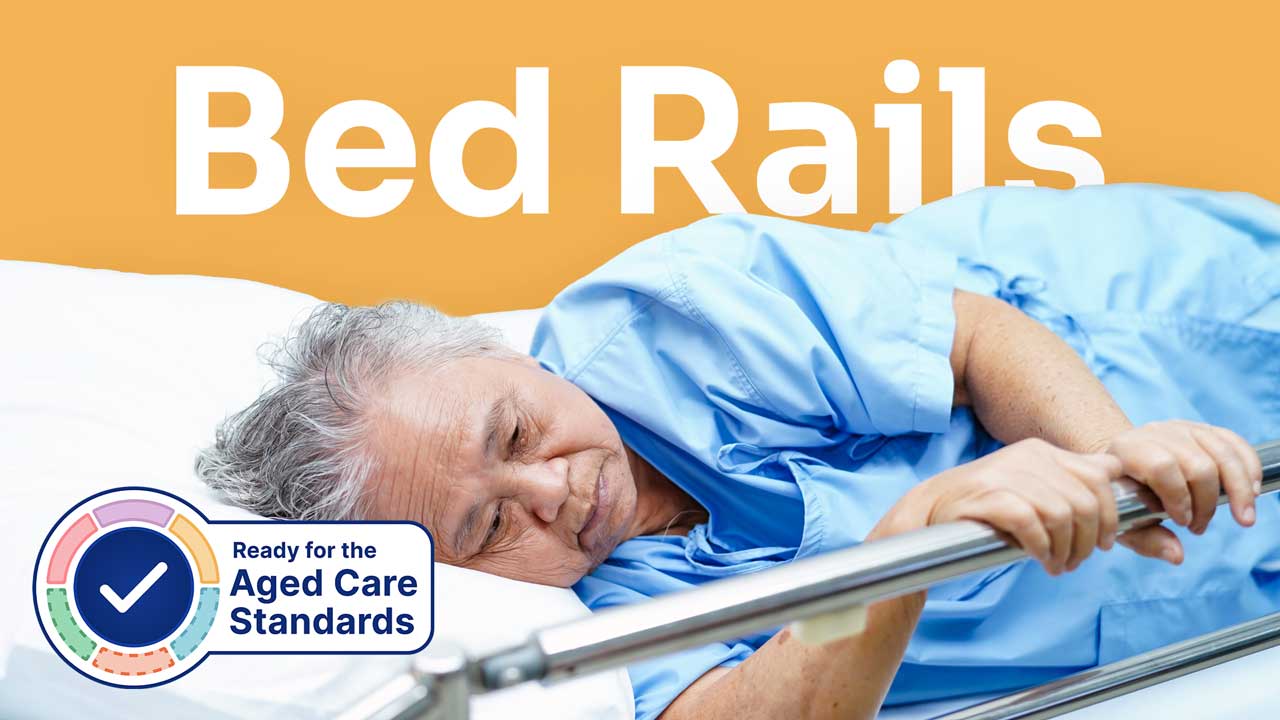What Are Bed Rails?
Bed rails, which might also be referred to as cot sides, side rails, side bars, grab bars or safety rails, are adjustable bars made of metal or rigid plastic components. They are attached to one or both sides of a medical bed and come in a variety of heights and lengths (SA Health 2015; SCV 2019a).
Bed rails are sometimes used when there are concerns that a resident will fall out of bed (SCV 2019b). They may also be used to support residents when they adjust themselves in bed or get in and out of bed (Baiera 2023). Some residents may be afraid of falling out of bed and feel more secure with bed rails in place (SCV 2019a, c).
However, bed rails are not necessarily safe and are considered a type of restrictive practice. Therefore, bed rails must only be used as a last resort where the benefits outweigh the risks (SCV 2019a).
If bed rails are ultimately used, this should be done in the safest way possible and in accordance with all legislation and requirements related to restrictive practices.
When Are Bed Rails Considered a Restrictive Practice?
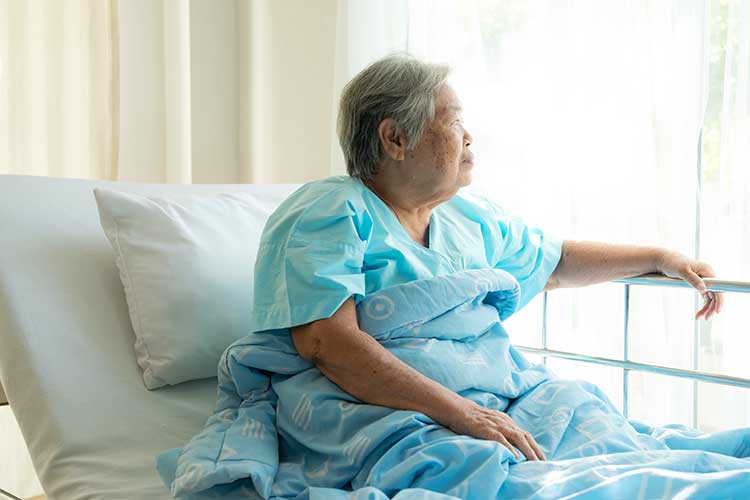
Bed rails are considered to be a type of mechanical restraint, even when used for safety purposes or to prevent harm to a resident. They are still a restrictive practice even if the resident consents to their use (ACQSC 2021).
The only times when bed rails are not considered a restrictive practice are when:
- They are being used for therapeutic or non-behavioural purposes
- The resident can operate the bed rails themselves, or
- The bed rails are partial, meaning the resident can still get in and out of bed as they please.
(ACQSC 2021)
Like all other restrictive practices, bed rails have the potential to cause serious harm and should only be used as a last resort after alternative options have been exhausted and after considering the likely impacts on the resident (ACQSC 2021).
Like other restrictive practices, the use of bed rails requires a behaviour support plan to be put into place for the resident (ACQSC 2021).
Bed Rails Under the Strengthened Aged Care Quality Standards
Standard 3: Care and Services - Outcome 3.2: Delivery of care and services (Action 3.2.7) under the strengthened Aged Care Quality Standards requires that the use of restrictive practices is minimised as much as possible and that when restrictive practices are used, they are:
- Only used as a last resort
- Used in the least restrictive form and for the shortest length of time possible
- Used with the older person’s informed consent
- Monitored and regularly assessed.
(ACQSC 2024)
As bed rails are a restrictive practice, they must comply with these requirements.
Risks Associated With Bed Rails
Bed rail-related injuries and deaths have occurred both in Australia and overseas (SCV 2019a).
In the United States alone, between 1985 and 2013, there were 531 reported deaths related to bed rails, with causes of death including entrapment, entanglement and strangulation (Gibson 2021).
A Monash University study identified three deaths in Australian aged care facilities between 2000 and 2013 that were associated with bed rails. In all three cases, the resident died as a result of mechanical asphyxia after falling out of bed (Bellenger et al. 2017).
Injury and death often occur when a resident becomes trapped between the bed rail and their mattress. As older adults are frailer than other people, they may not be strong enough to dislodge themselves. Their body weight will cause them to sink further into the gap, and consequently, their chest cavity will be compressed, and they will struggle to breathe (Nursing Home Abuse Center 2019).
Other potential risks to residents include:
- Entrapment, strangulation or asphyxiation
- Climbing over the bed rail and falling
- Injury caused by involuntary body movement
- Agitation
- Feeling isolated or restricted
- Incontinence, malnutrition, dehydration or constipation
- Pressure injury.
(SCV 2019d)
Furthermore, studies have found that bed rails don’t necessarily deter residents from getting out of bed unassisted, which can pose a serious risk of harm (SESLHD 2020).
If bed rails are poorly designed, maintained or fitted, the risk of injury increases (SESLHD 2020).
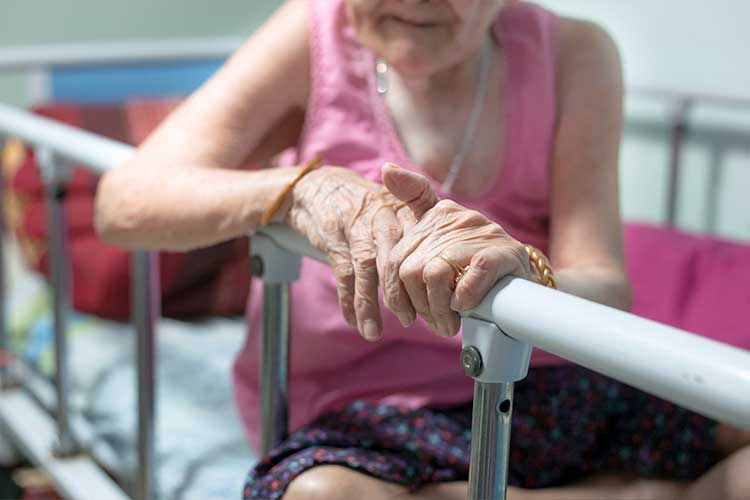
Steps for Using Bed Rails Safely
Safer Care Victoria has outlined five steps to using bed rails as safely as possible:
- Conduct an individual assessment
- Consider alternatives
- Gain consent
- Minimise risk during use
- Regularly review the decision to use bed rails.
(SCVb 2019)
1. Conduct an Individual Assessment
The decision to use bed rails as a restrictive practice must be made by an approved health practitioner who has day-to-day knowledge of the resident. This practitioner must have assessed the resident as posing a risk to themselves or others and assessed the use of bed rails as necessary. These assessments must all be documented (ACQSC 2021).
Bed rails should not be used in the following situations:
- Against the resident’s wishes
- If the resident is experiencing delirium, disorientation or agitation, or wants to get out of bed, i.e. if there is any risk of the resident trying to climb over the rails
- If the resident can mobilise safely and independently.
(SCV 2019a, c)
You will need to discuss the potential benefits and risks of using bed rails together with the resident and their family (SCV 2019a), taking into account:
- The reason why bed rails are being considered
- Potential risks of harm to the resident
- The care that will be required to reduce the risk of harm if bed rails are used.==
Overall, it’s important to weigh up the likelihood of harm if bed rails are not used versus the likelihood of harm if bed rails are used (SESLHD 2020).
Ensure the resident has a behaviour support plan in place (ACQSC 2021).
2. Consider Alternatives
Before deciding to use bed rails, you must first consider alternative strategies. Examples include:
- Increased supervision of the resident
- Relocating the resident to an area with higher visibility
- Engaging family or carers to provide increased supervision
- Lowering the height of the resident’s bed (if adjustable)
- Providing the resident with a floorline bed or a larger bed
- Considering using manual handling devices to assist with repositioning the patient in the bed
- Using positional wedges (e.g. pillows)
- Sitting the resident out of bed during the day
- Diversional activities and therapies.
(SCV 2019a)
3. Gain Consent
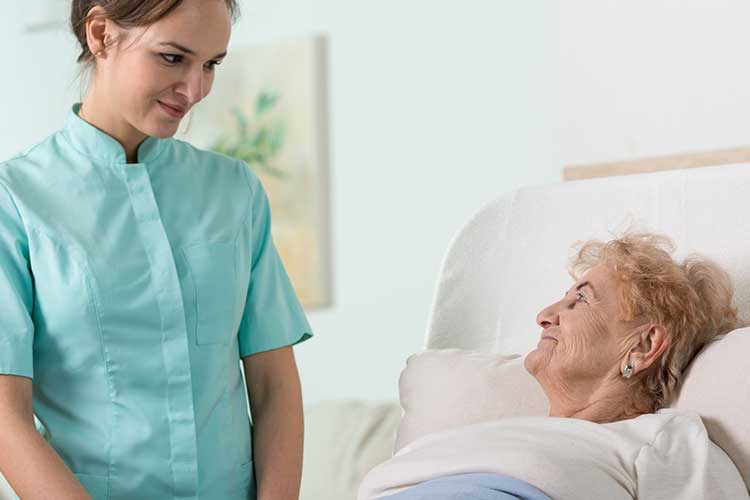
If alternative strategies are deemed inappropriate and bed rails have been decided as the best option, you need to gain consent from the resident before using them. If the resident does not have decision-making capacity and the use of bed rails is indicated, you must get consent from the resident's restrictive practice substitute decision-maker instead (SCV 2019a; ACSQC 2021).
Once consent has been gained, the following needs to be documented:
- Clinical reasons for using/not using bed rails, including specific risks and benefits
- An agreed plan to address the underlying reasons for needing bed rails
- The circumstances in which bed rails will be used
- Individualised risk reduction strategies
- The level of observation required for the resident
- Indicators that the bed rails can cease to be used
- Alternative strategies that were considered or trialled
- Any written information that was provided to the resident
- Consent from the resident or their substitute decision-maker.
(SCV 2019a)
Remember that the resident can withdraw their consent at any time (SCV 2019a).
The only time when bed rails can be used without consent from the resident (or their substitute decision-maker) is in an emergency situation - that is, a ‘serious or dangerous situation that is unanticipated or unforeseen and that requires immediate action’ (ACQSC 2021).
However, during an emergency, the resident’s restrictive practice substitute decision-maker must be informed as soon as possible once the restrictive practice has commenced (ACQSC 2021).
Furthermore, the following must also be documented in the resident’s care and services plan:
- The behaviour that required the emergency use of a restrictive practice
- Any alternatives to restrictive practices that were considered or used
- The reasons why the restrictive practice was necessary
- The care that will be provided to the resident in order to address this behaviour
- A record that the resident’s restrictive practice substitute decision-maker was informed about the use of the restrictive practice
- Any relevant assessments, information and decisions
- Any additional advice or support that is needed.
(ACQSC 2021)
4. Minimise Risk During Use
Bed rails must be installed in accordance with the manufacturer’s directions. Furthermore, the combination of bed, mattress and bed rails being used must comply with the IEC/ISO Standard, Medical Electrical Equipment, 2015 - Part 2-52: Particular requirements for basic safety and essential performance of medical beds (SCV 2019a).
Entrapment or asphyxiation may occur in gaps between individual rails, gaps between the mattress and bed rail, or gaps between the bed rail and bedhead or bed end. Therefore, all gaps should be minimised as much as possible by:
- Ensuring bed rails are correct for the bed
- Using matching bed rails
- Ensuring the bed rail covers and mattresses comply with the IEC/ISO Standards
- Ensuring the mattress is compatible with the bed and bed rails.
(SCV 2019a, d)
Once the bed rails are in use, you must ensure any risks to the resident are minimised as much as possible by:
- Ensuring the resident’s entire care team is aware that bed rails are being used and is appropriately educated about the risks of bed rails
- Ensuring the resident’s call bell and personal items are within easy reach so the resident doesn’t injure themself trying to reach them
- Positioning the bed at the lowest height setting
- Encouraging the resident to mobilise, maintain independence and go about their daily activities
- Regularly observing the resident when bed rails are in use and escalating the frequency of observations for those who cannot use a call bell or communicate
- Anticipating and addressing the resident’s physical and psychological needs (e.g. toileting, food, drink, medicines, boredom and changing positions). This will reduce the risk of the resident attempting to exit their bed while bed rails are in place
- Considering the risk of entrapment or suffocation, especially if the resident is experiencing impaired cognition, sensory impairment or involuntary movements
- Monitoring the resident for functional decline and reevaluating the use of bed rails if necessary
- Ensuring medical tubing and electrical cords do not get caught when adjusting the bed rails.
(SCV 2019a, d)
5. Regularly Review the Decision to Use Bed Rails
Like all types of restrictive practices, bed rails should only be used for the shortest length of time possible. The decision to use bed rails should be continually monitored, reviewed and documented, and their use should be reduced or stopped as soon as an appropriate alternative strategy can be employed instead (ACSQC 2021).
Remember to always comply with regulations and legislation regarding the use of restrictive practices. For more information, see Ausmed’s Training Module on Minimising Restrictive Practices in Residential Aged Care.
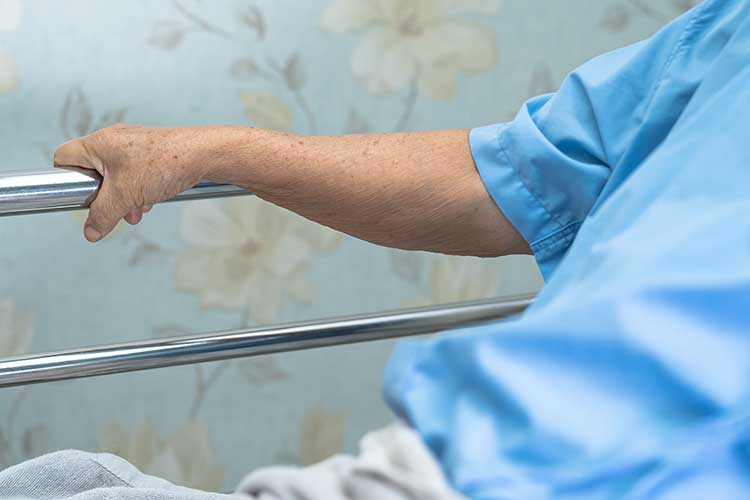
Test Your Knowledge
Question 1 of 3
Which one of the following is a situation where bed rails are not considered to be a restrictive practice?
Topics
Further your knowledge
 Free
Free Free
FreeReferences
- Aged Care Quality and Safety Commission 2024, Standard 3: Care and Services, Australian Government, viewed 6 May 2024, https://www.health.gov.au/resources/publications/strengthened-aged-care-quality-standards-august-2025?language=en
- Aged Care Quality and Safety Commission 2021, Overview of Restrictive Practices, Australian Government, viewed 15 February 2024, https://www.agedcarequality.gov.au/sites/default/files/media/overview-of-restrictive-practices_0.pdf
- Baiera, V 2023, Bed Rails for Seniors: The Benefits of Increased Safety & Comfort, Step2Health, viewed 15 February 2024, https://step2health.com/blogs/news/bed-rails-for-seniors-the-benefits-of-increased-safety-comfort
- Bellenger, E, Ibrahim, J E, Bugeja, L & Kennedy, B 2017, ‘Physical Restraint Deaths in a 13-year National Cohort of Nursing Home Residents’, Age and Ageing, vol. 46, no. 4, viewed 15 February 2024, https://academic.oup.com/ageing/article/46/4/688/2801280
- Gibson, K 2021, ‘Bed Rails That Can Injure and Kill the Elderly Remain on the Market’, CBS News, 12 July, viewed 15 February 2024, https://www.cbsnews.com/news/bedrails-deadly-elderly-market/
- Nursing Home Abuse Center 2019, Bedrail Injuries, The Meyer Law Firm, viewed 16 February 2024, https://www.nursinghomeabusecenter.com/nursing-home-injuries/bedrails/
- Safer Care Victoria 2019a, Guidance on Use of Bed Rails, Victoria State Government, viewed 15 February 2024, https://www.bettersafercare.vic.gov.au/sites/default/files/2019-10/Guidance%20on%20use%20of%20bed%20rails.pdf
- Safer Care Victoria 2019c, Safe Use of Bed Rails, Victoria State Government, viewed 15 February 2024, https://www.bettersafercare.vic.gov.au/sites/default/files/2020-01/Fact%20sheet_Safe%20use%20of%20bed%20rails.pdf
- Safer Care Victoria 2019d, Should Bed Rails be Used?, Victoria State Government, viewed 16 February 2024, https://www.bettersafercare.vic.gov.au/sites/default/files/2019-10/Flowchart_Safe%20use%20of%20bed%20rails.pdf
- Safer Care Victoria 2019b, Use of Bed Rails, Victoria State Government, viewed 15 February 2024, https://www.safercare.vic.gov.au/best-practice-improvement/clinical-guidance/older-people/use-of-bed-rails
- SA Health 2015, Safe Use of Bed Rails, Government of South Australia, viewed 15 February 2024, https://www.sahealth.sa.gov.au/wps/wcm/connect/ab85d2004b7bd87db8d2f97c1f47d846/15093.6+-+Tool+3+%28v3%29WebS.pdf?MOD=AJPERES&CACHEID=ROOTWORKSPACE-ab85d2004b7bd87db8d2f97c1f47d846-nwK3ID1
- South Eastern Sydney Local Health District 2020, Bedrails – Adult – For Use in Acute, Subacute and Residential Care Settings, New South Wales Government, viewed 16 February 2024, https://www.seslhd.health.nsw.gov.au/sites/default/files/documents/SESLHDPR421%20-%20Bedrails%20%E2%80%93%20Adult~%20and%20Residential%20Care%20Settings.pdf
 New
New 